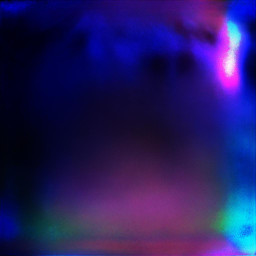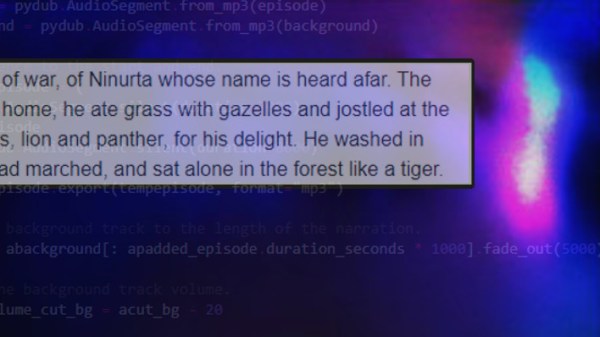[Stavros Korokithakis] finds the experience of falling asleep to fairy tales soothing, and this has resulted in a fascinating project that indulges this desire by using machine learning to generate mildly incoherent fairy tales and read them aloud. The result is a fantastic sort of automated, machine-generated audible sleep aid. Even the logo is machine-generated!

The project leverages the natural language generation abilities of OpenAI’s GPT-3 to create fairytale-style content that is just coherent enough to sound natural, but not quite coherent enough to make a sensible plotline. The quasi-lucid, dreamlike result is perfect for urging listeners to imagine pleasant nonsense (thanks to Nathan W Pyle for that term) as they drift off to sleep.
We especially loved reading about the methods and challenges [Stavros] encountered while creating this project. For example, he talks about how there is more to a good-sounding narration than just pointing a text-to-speech engine at a wall of text and mashing “GO”. A good episode has things like strategic pauses, background music, and audio fades. That’s where pydub — a Python library for manipulating audio — came in handy. As for the speech, text-to-speech quality is beyond what it was even just a few years ago (and certainly leaps beyond machine-generated speech in the 80s) but it still took some work to settle on a voice that best suited the content, and the project gradually saw improvement.
Deep Dreams Podcast has a GitLab repository if you want to see the code that drives it all, and you can go to the podcast itself to give it a listen.











